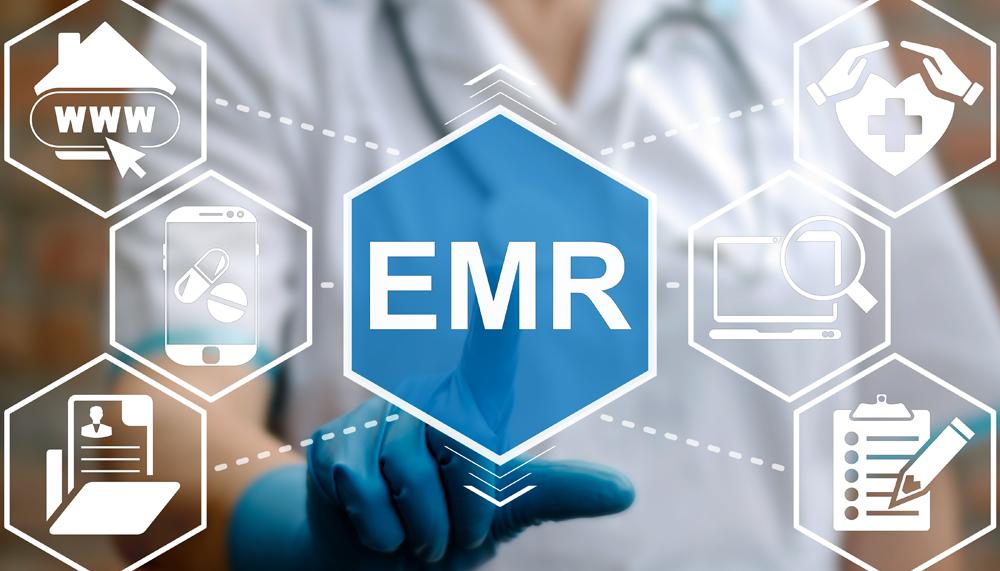Switching from paper records to electronic medical records (EMR) is a transition that can be a process, but it has the potential to modernize your medical practice. EMRs offer an effective and streamlined way to manage patient information, simplify documentation, and improve overall efficiency.
At PatientNow, we specialize in helping medical practices make this significant shift seamlessly. Serving practices nationwide, we’re equipped to support you with EMR solutions that can transform the way you handle patient data. With our guidance, you’ll be well-prepared to overcome challenges and embrace the digital era of healthcare.
The Downsides of Paper Records
Managing patient data using paper records can be labor-intensive and prone to errors. Accessibility is limited to physical location, and the risk of loss or damage to these records is higher. Moreover, paper records can make the coordination of care among different healthcare providers within your practice cumbersome.
What Is EMR?
Electronic medical records are the digital equivalent of a patient’s traditional paper chart. It’s a more efficient method of recording and tracking patient information over time and offers easy retrieval and modification. EMRs make the process of patient data management significantly more streamlined compared to paper records.
EHR vs. EMR
While both EHR (electronic health records) and EMR serve the purpose of digital record-keeping, they are not interchangeable. EMRs are specific to one practice, offering a detailed record of your medical history as documented by a particular healthcare provider. EHRs provide a further-reaching health history, accessible and shareable across multiple practices.
Why Transitioning to EMR Is Important
Improved Efficiency
Transitioning to electronic medical records offers a boost in operational efficiency for healthcare providers. Digital records can be accessed or updated with a few clicks, reducing time spent on manual data entry and retrieval. The convenience offered by electronic systems simplifies workflows and allows healthcare professionals to focus on patient care.
Improved Accuracy
Switching to EMR can substantially improve the accuracy of patient data. Human errors common in manual record-keeping are minimized, and up-to-date information can be easily maintained. As a result, the likelihood of misdiagnoses or medication errors is reduced.
Positive Impact on Patient Care
Adopting electronic medical records elevates the quality of patient care. Easy access to comprehensive medical histories allows for more informed decision-making during diagnosis and treatment. The result is quicker, more effective care, which is beneficial for both the patient and the healthcare provider.
Positive Impact on Administration
The use of EMRs for patient data management leads to better administrative workflow. With digital records, administrative tasks such as billing, scheduling, and compliance reporting become more streamlined and easier. This allows administrative staff to focus on other critical tasks rather than busy work.
Common Challenges in Transitioning to EMR Systems
Resistance to Change
One major obstacle in moving to electronic medical records management is resistance to change from staff. They may view the shift as daunting or unnecessary, preferring the familiarity of paper records. It can be a process to get everyone in your practice on board with the new changes.
Financial Constraints
Investing in EMR technology often involves significant upfront costs, including software, hardware, and training. For many healthcare providers, especially smaller practices, these financial requirements can be a serious challenge. However, the long-term gains in efficiency and accuracy usually offset the initial costs.
Technical Issues
Medical staff may not always be comfortable using technology. This can make the transition process more difficult since additional care may be needed to familiarize these members of the team with the new system. Finding user-friendly software with plenty of support can help.
Time Constraints
Implementing EMR software solutions is a time-consuming process that involves training, system setup, and data migration. Balancing these demands with ongoing patient care responsibilities can be difficult. Planning and time management are key to a successful transition.
Data Migration
One of the most labor-intensive aspects of moving to an EMR software system is the migration of existing patient data from paper records or older digital systems. Ensuring data accuracy during this process is paramount, as mistakes can have significant impacts on patient care.
Compliance and Security Concerns
Adherence to regulations and concerns about data security are major aspects of electronic medical records management. Meeting HIPAA standards and other compliance requirements is not optional and necessitates that healthcare providers take the proper precautions when transitioning to a new system.
Our Solutions for These Challenges
Educating Staff on the Benefits of EMRs
One effective way to mitigate resistance to change is through education. By providing clear information on how EMR systems can streamline operations and improve patient care, staff may be more willing to embrace the new technology.
Involving Medical Staff in the Decision-Making Process
Including medical staff in the selection and implementation of EMR software solutions helps foster a sense of ownership and commitment to the transition. When medical professionals have a say in the tools they will use, they are generally more receptive to the change.
Training Programs and Workshops
Taking part in structured training programs that focus on EMR use can dramatically reduce the learning curve for staff. Workshops can also provide hands-on experience, making the transition smoother for everyone involved.
Easy Data Migration Through BarcodeNow
One of the more tedious challenges in transitioning to EMRs is data migration. As part of our EMR software solution, we use BarcodeNow, which simplifies this process by offering an efficient and accurate means to transfer existing patient data into the new system.
Advanced Security for Patient Privacy
Security is a major concern when dealing with electronic records. We offer advanced security measures designed to safeguard patient information, addressing one of the biggest hurdles in moving from paper to electronic records.
Request a Demo Today
Transitioning to an EMR system can be a challenge, but it’s a step toward greater efficiency, improved patient care, and streamlined administrative tasks. At PatientNow, we offer comprehensive solutions to make this transition as smooth as possible, and we will help you every step of the way. Contact us via our online form or call us at (800) 436-3150 to schedule a demo.
You Might Also Like
As the proud owner of a hormone replacement therapy practice, you understand the importance of having a well-organized information system. Having immediate access to your client's records helps you provide…
EMR stands for electronic medical records. As a MedSpa owner, you may wonder if you really need this type software. You no doubt want to deliver above-average service to your…
Your medical team is tasked with handling a wide array of responsibilities every single day. As a result, they may feel overwhelmed or unable to provide each patient with the…





